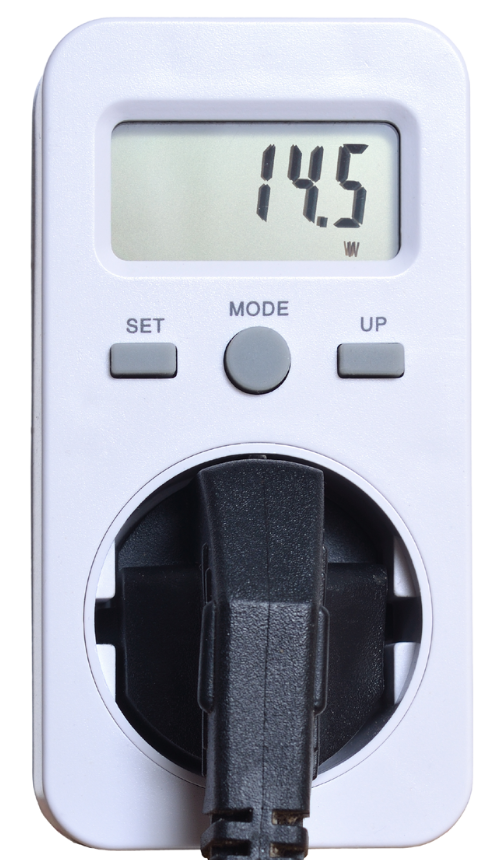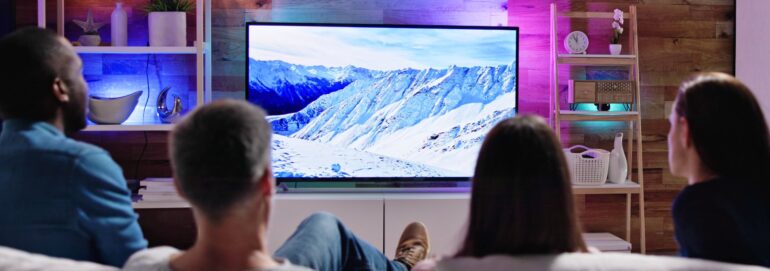Power consumption of televisions: Which features are decisive?
Nowadays, most private households have at least one TV set that is based on one of two technologies. Backlit LED LCDs, which include QLED, NanoCell and Mini-LED TVs. OLED models with WOLED, OLED evo, MLA and QD technology. We explain how the power consumption of televisions differs and which factors generally influence energy requirements.

Although there are still real power guzzlers to choose from at retailers today – if you know how and where to look – the days of plasma or even tube televisions are long behind us. However, before we delve deeper into the subject, we advise all those who are still using one of the above-mentioned devices to switch to a modern model.
There are several points of reference to help you find the TV of your dreams. First of all, you can assume that larger screens with high resolutions generally drive up consumption. Accordingly, smaller televisions with fewer pixels to be controlled and lower brightness have a lower power requirement and are therefore easier on your wallet and the environment.
Which models consume the most?
At the top of the list are large 8K models, which can draw over 350 kWh in HDR mode from a screen diagonal of 65 inches. Full HD-capable devices generally do not exceed 43 inches and therefore only consume a fraction of this energy. Guide values for UHD televisions are around 80 – 110 kWh in SDR mode and around 170 – 220 kWh in HDR mode for 65-inch models.
With equal weighting of the operating modes, the resulting average consumption of 145 kWh per 1000 operating hours and an average electricity price of around 27 cents (as of April 2024), this results in average costs of just under 40 euros per year or 11 cents per day.
While the difference in consumption between OLEDs and LED LCDs is not worth mentioning up to the 65-inch segment, the picture changes significantly above this mark in favor of backlight technology. Especially in high-contrast mode, OLEDs tend to consume a few more kilowatt hours.
New regulation with strict limits
In order to reduce these consumption values even further in the future, the European Union has set new limits for the energy consumption of electronic devices, including televisions, with the Ecodesign Directive of March 2023. These requirements serve to reduce the ecological footprint and ensure that you as a consumer use more efficient and environmentally friendly devices. Televisions must therefore comply with these regulations in order to be sold on the European market.
However, this regulation only takes into account the lower energy consumption in SDR mode. In this operating mode, the appliance does not use its full power reserves. The TV therefore runs on“low flame“, so to speak. Only when you watch content in HDR can the model show what is possible and in most cases draws significantly more power from the socket. The manufacturer only has to ensure that the maximum consumption applies to every picture setting of the TV in SDR.
A total of seven efficiency classes are used for classification, starting with the most efficient category“A” and ending with the weakest rating“G“. In theory, this makes it relatively easy for you to choose a low-consumption TV set. In practice, however, the adjustments within the directive paint a different picture. The impression is often given that most modern televisions have rather high energy requirements.
More efficiency through stricter requirements?
Although this can lead to confusion among consumers, it is certainly intentional. The stricter regulations are intended to encourage manufacturers to develop even more energy-efficient appliances in the future. However, this trend is only slowly emerging. In many cases, even current televisions barely exceed an“E” index. In most cases, you will find models in one of the two worst levels“F” or“G“.
To provide a visual reference, mandatory labels on site or in the online store inform you about the respective consumption data including classification, model code and diagonal dimensions. To this end, every TV sold in Europe must be registered in a database via the so-called“EPREL ID“, short for“European Product Registry for Energy Labeling“.
The printed QR code takes you directly to the entry and you can check the information there if necessary.
Below a color code for categorization in the upper area, you can immediately see how many kilowatt hours the TV consumes based on 1,000 operating hours when playing SDR content.
Below this is the energy requirement for HDR content. This is followed by the screen diagonal and the resolution ratio. The amount of power consumption, i.e. the electrical energy required for operation, is not solely dependent on the production size and maximum resolution. As mentioned above, the intensity of the brightness can also increase consumption. This is typically the case when content is predominantly played in HDR mode.
This is where the TV reveals a large part of its performance. Settings that are particularly bright and contain a lot of blue content require even more power. Therefore, usage behavior also has a significant influence on energy consumption.
If you have any ideas or suggestions on this topic, or if you think we have overlooked something important, please leave us a comment. We are always happy to receive constructive feedback.







